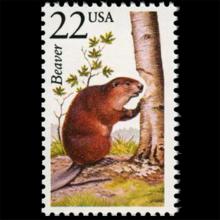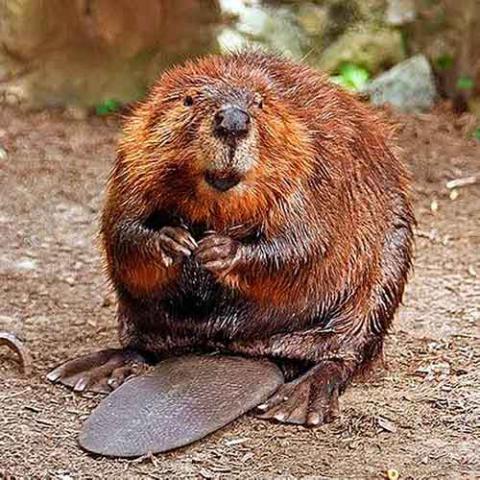NAMES
TAXONOMY
United States
Issued:
Stamp:
Castor canadensis
United States
Issued:
Stamp:
Castor canadensis
United States
Issued:
Stamp:
Castor canadensis
Genus species (Animalia): Castor canadensis
The North American beaver (Castor canadensis) is one of two extant beaver species, along with the Eurasian beaver (Castor fiber). It is native to North America and introduced in South America (Patagonia) and Europe (primarily Finland and Karelia). In the United States and Canada, the species is often referred to simply as "beaver", though this causes some confusion because another distantly related rodent, Aplodontia rufa, is often called the "mountain beaver". Other vernacular names, including American beaver and Canadian beaver, distinguish this species from the other extant beaver species, Castor fiber, which is native to Eurasia. The North American beaver is one of the official national wildlife of Canada symbols and is the official state mammal of Oregon and New York.
Behavior
Beavers are active mainly at night. They are excellent swimmers and may remain submerged up to 15 minutes. More vulnerable on land, they tend to remain in the water as much as possible. They use their flat, scaly tail both to signal danger by slapping the surface of the water and as a location for fat storage.
They construct their homes, or "lodges", out of sticks, twigs, rocks, and mud in lakes, streams, and tidal river deltas. These lodges may be surrounded by water, or touching land, including burrows dug into river banks. Beavers are well known for building dams across streams and constructing their lodges in the artificial ponds which form. When building in a pond, the beavers first make a pile of sticks and then eat out one or more underwater entrances and two platforms above the water surface inside the pile. The first is used for drying off. Towards winter, the lodge is often plastered with mud which, when it freezes, has the consistency of concrete. A small air hole is left in the top of the lodge.
Reference: Wikipedia


